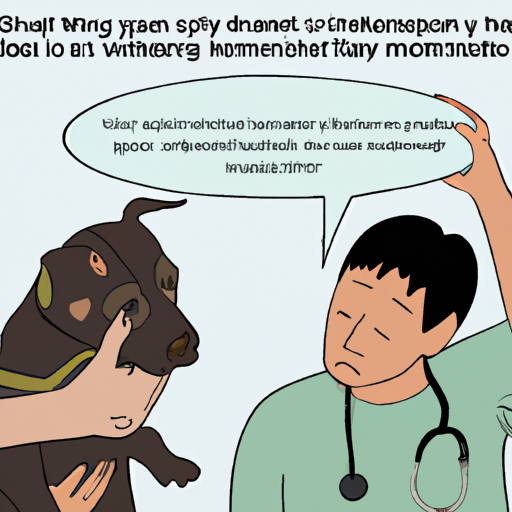If your beloved four-legged friend has been scratching more than usual, losing hair, or developing sores, they might be suffering from a common skin disease known as mange. Mange in dogs can be a serious condition if left untreated but don’t worry, with proper care and guidance, your dog can recover fully. This guide will walk you through everything you need to know about mange in dogs: recognizing the symptoms, understanding the causes, and exploring the various treatment options.
Table of Contents
- Understanding Mange in Dogs
- Symptoms of Mange in Dogs
- Causes of Mange in Dogs
- Treatment options for Mange in Dogs
- Prevention of Mange in Dogs
- FAQ
- Conclusion
Key Takeaways
- Mange is a common skin disease in dogs caused by mites.
- There are two types of mange: sarcoptic and demodectic, each with distinct symptoms and treatment.
- Early detection and treatment are crucial to prevent severe infestations.
- Always consult with a veterinarian for an accurate diagnosis and treatment plan.
Understanding Mange in Dogs
In simple terms, mange is a skin disease in dogs caused by various types of mites. These pesky parasites burrow into your dog’s skin, causing unbearable itchiness and discomfort. Over time, this can lead to hair loss, sores, and infections. There are two main types of mange: sarcoptic (also known as canine scabies) and demodectic (also known as red mange).
Symptoms of Mange in Dogs
The signs of mange can vary depending on the type of mite infestation. However, some common symptoms include:
- Intense itching
- Hair loss
- Red, inflamed skin
- Sores and lesions
- Crusting and scaling
If your dog shows any of these signs, it’s crucial to consult with a vet immediately to prevent further complications. You can find more information about recognizing these symptoms on this page about Dog Skin Problems.
Causes of Mange in Dogs
Mange is primarily caused by two types of mites: Sarcoptes scabiei and Demodex canis. Sarcoptes scabiei are highly contagious and can easily spread among dogs through direct contact. On the other hand, Demodex canis is a natural inhabitant of a dog’s skin but can cause problems when the dog’s immune system is compromised, leading to an overpopulation of mites. Here’s a quick comparison table of the two types of mange:
| Type of Mange | Cause | Symptoms | Contagious |
|---|---|---|---|
| Sarcoptic | Sarcoptes scabiei mites | Intense itching, hair loss, redness, sores | Yes |
| Demodectic | Overpopulation of Demodex canis mites | Mild itching, hair loss, redness, scaling | No |
Treatment Options for Mange in Dogs
Treatment of mange primarily involves eradicating the mites and relieving the symptoms. Your vet may prescribe a combination of medicated shampoos, dips, oral medications, or injectable drugs, depending on the severity of the condition. In addition to prescribed treatments, home remedies can also aid in alleviating the symptoms. You can find some of these home remedies on this page about Dog Care Tips.
However, it’s essential to remember that each dog is unique, and what works for one might not work for another. Always consult with your vet before starting any treatment regimen.
Prevention of Mange in Dogs
Preventing mange involves maintaining your dog’s overall health and hygiene. Regular grooming, a balanced diet, and routine vet check-ups can keep your dog’s immune system strong and better equipped to ward off mites.
In the case of sarcoptic mange, avoid letting your dog interact with infected dogs as the mites can easily spread. For more tips on preventing dog diseases, check out this page on Dog Health.
Frequently Asked Questions
1. Can humans get mange from dogs?
Humans can get a temporary skin reaction from sarcoptic mange, causing itchiness and redness. However, the mites cannot reproduce on human skin, so the condition is self-limiting.
2. Is mange in dogs curable?
Yes, mange in dogs is curable with proper treatment. Early detection and treatment are crucial for a full recovery.
3. How long does it take for a dog to recover from mange?
The recovery period can vary depending on the severity of the condition and the dog’s overall health. Generally, it can take anywhere from a few weeks to several months.
Conclusion
While mange in dogs can be a distressing condition, remember that it’s treatable and often preventable. Early detection, proper treatment, and preventative measures can help your dog live a happy, itch-free life. Always consult with a vet for an accurate diagnosis and treatment plan. For more information about mange and other dog health issues, you can visit this comprehensive guide on Dog Diseases.



